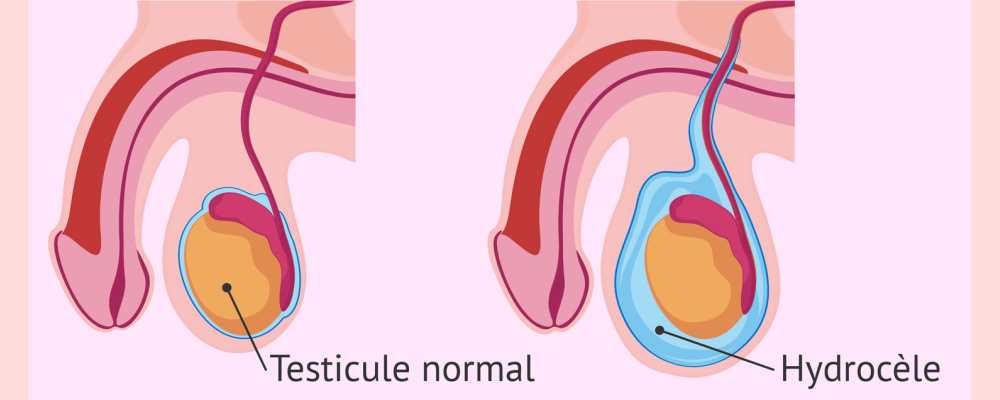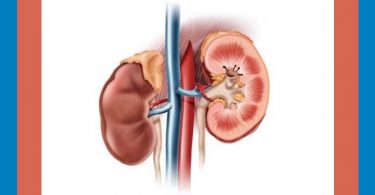Hydrocele is the accumulation of fluid in the sac surrounds the testis.
Hydro – fluid, cele – sac
- It is usually painless.
- Common in newborn infants, resolves spontaneously till age of one year.
- May be due to any pathology such as trauma to testies, tumor and infection.
- The fluid collection may result from failure of closure of tube by which testies descended from abdomen to scrotum (patent processus vaginalis) or an imbalance of secretion and absorption within the tunica vaginalis.
What is Hydrocele?
our body is divided into four cavities named first as dorsal body cavity containing brain and spinal cord second is thoracic cavity containing lungs, heart oesophagus and other vital structure, third is the abdominal cavity that encloses most of the digestive organs and kidneys; and forth is the pelvic cavity that encloses the bladder and reproductive organs. All these cavities are interconnected with various structures.
Abdominal and pelvic cavity is interconnected with a tube like structure named as inguinal canal. The inguinal canal has two openings: the deep inguinal ring and superficial inguinal ring..During embryonic development, the inguinal canal also embodies the processus vaginalis, a structure that develops from the peritoneum during gestational week 12. In males, it extends through the inguinal canal into the scrotum, allowing the testes to descend into the scrotal sac. Following completion of testicular descent, the processus vaginalis undergoes programmed cell death to close the path between the peritoneum and scrotum. After closure, the lower portion of the processus vaginalis becomes the tunica vaginalis testis.
Failure to closure of processue vaginalis termed as patent processus vaginalis, which leads to accumulation of fluid into tunica vaginalis termed as hydrocele. It is known as communicating hydrocele.
Tunica vaginalis itself has two layer, inner is visceral layer and outer is parietal layer. A pouch is formed between these two layers. Fluid accumulated in this pouch due to defect between secretion and absorption is termed as non-communicating hydrocele.
Homeopathy treatment for Hydrocele
Homeopathy treats the person as a whole. It means that homeopathic treatment focuses on the patient as a person, as well as his pathological condition. The homeopathic medicines are selected after a full individualizing examination and case-analysis, which includes the medical history of the patient, physical and mental constitution etc. A miasmatic tendency (predisposition/susceptibility) is also often taken into account for the treatment of chronic conditions. The medicines given below indicate the therapeutic affinity but this is not a complete and definite guide to the treatment of this condition. The symptoms listed against each medicine may not be directly related to this disease because in homeopathy general symptoms and constitutional indications are also taken into account for selecting a remedy. To study any of the following remedies in more detail, please visit our Materia Medica section. None of these medicines should be taken without professional advice.
List of homeopathy medicines for hydrocele
- Rhododendron –
- Iodum
- Argentum nitricum
- Pulsatilla
- Graphitis
- Apis mellifica
- Nux vomica
- Sambucus
- Apocynum
- Cantharis
- Sarsaparilla
- Lycopodium
- Colchicum
- Kali-iodum
- Aurum metallicum
- Selenium
- Spongia tosta
- Zincum metallicum
Rhododendron
- Testicles swollen, painful, drawn up.
- Induration and swelling of testes after gonorrhoea.
- Hydrocele
- The modality (worse before a storm) is a true guiding symptom.
- Rheumatic tearing in all limbs, especially right side; worse, at rest and in stormy weather.
- Stiffness of neck. Pain in shoulders, arms, wrists; worse when at rest.
- Pains in bones in spots, and reappear by change of weather.
- Cannot sleep unless legs are crossed.
Iodum
- Testicles swollen and indurated.
- Hydrocele
- Loss of sexual power, with atrophied testes.
- Anxiety when quiet.
- Present anxiety and depression, no reference to the future.
- Sudden impulse to run and do violence.
- Forgetful
- Must be busy.
- Fear of people, shuns every one.
Aurum metallicum
- Pain and swelling of testicles.
- Chronic induration of testicles.
- Atrophy of testicles in boys.
- Hydrocele
- Feeling of self-condemnation and utter worthlessness.
- Profound despondency, with increased blood pressure, with thorough disgust of life, and thoughts of suicide.
- Talks of committing suicide. Great fear of death.
- Peevish and vehement at least contradiction.
- Constant rapid questioning without waiting for reply.
- Cannot do things fast enough.
- Oversensitiveness to noise, excitement, confusion.
Selenium
- Dribbling of se-men during sleep.
- Dribbling of prostatic fluid.
- Hydrocele
- Irritability after coitus. Loss of sexual power, with lascivious fancies.
- Increases desire, decreases ability.
- Semen thin, odorless. Sexual neurasthenia.
- On attempting coition, penis relaxes.
Spongia tosta
- Swelling of spermatic cord and testicles, with pain and tenderness.
- Heat in parts.
- Exhaustion and heaviness of the body after slight exertion
- Anxiety and difficult breathing.
- Excessive thirst, great hunger.
- Cannot bear tight clothing around trunk.
Zincum metallicum
- Testicles swelled, drawn up.
- Erections violent.
- Falling off of hair (pubic).
- Drawing in testicles up to spermatic cord.
- Weak memory.
- Very sensitive to noise.
- Averse to work, to talk.
- Child repeats everything said to it.
- Fears arrest on account of a supposed crime.
Cause of hydrocele
Primary cause-
Patent processue vaginalis – Failure to closure of processue vaginalis termed as patent processus vaginalis.
Secondary causes –
- Trauma to testies
- Torsion of the testies
- Testicular tumor
- Wuchereria bancrofti infection is the most common cause
Types of hydrocele
- Communicating
- Noncommunicating
Communicating hydrocele (usually discovered in infancy): failed closure of the tube by which testies descended from abdomen to scrotum (processus vaginalis) during intrauterine life. It is is similar to a hernia except that the sac connecting the abdomen to the scrotum contains only fluid rather than abdominal contents as in hernia.
Noncommunicating hydroceles: no connection to the peritoneal cavity, Fluid accumulated in the tunica vaginalis due to defect between secretion and absorption is termed as non-communicating hydrocele.
Clinical features of Hydrocele
- Fluctuant, painless swelling of affected scrotum
- May be present since infancy or childhood.
- Impulse on coughing negative (positive in congenital hydrocele)
- Testis cannot be palpated separately.
- Positive transillumination
Diagnosis of Hydrocele
- Usually a clinical diagnosis
- – Transillumination is one of the most common techniques used to diagnose hydrocele. It is widely believed that if light shines through the scrotum during transillumination, the mass is cystic filled with fluid, and if the light is blocked, the mass is solid.
- Ultrasound: hypoechoic fluid confirms the diagnosis.
Treatment of Hydrocele
Usually resolves spontaneously within 6 months of birth, if not following techniques are used-
- Aspiration of fluid through needle.
- Sclerotherapy – An irritating agent is injected to the hydrocele which helps in narrowing of the cyst.
Indications for surgery
- If spontaneous resolution does not occur in children by 1 year of age
- Excessive discomfort and/or if scrotal skin integrity is compromised
- An underlying pathology is suspected
- Testicle not palpable
- If infertilityis a concern
Complications of Hydrocele
- Hydrocele may rupture spontaneously or due to any trauma.
- It may protrude out from the muscular layer of the scrotum. This makes the case more difficult to treat.
- Hydrocele may transform into hematocele due to bleeding into sac. Trauma may be the reason of bleeding.
- There may be calcification of the sac if not treated timely.
- Infection which may lead to pyocele.
- Atrophy of testis may occur in long standing cases.
REFERENCE WORKS
Harrison’s Principles of Internal Medicine, 14th ed, McGraw-Hill
Davidson’s Principles and Practise of Medicine, 17th ed, 1996, Churchill Livingstone
New Manual of Homeopathic Materia Medica & Repertory, William Boericke, 2nd revised ed., 2001, B. Jain





Thanks alot, medicinal explanation according to symptoms is required.
What we can use if patient is in 4.2 yrs and following is using:
Rhododendron. 30
Spongia 30
Calc. Flour 6x
No major difference feel in the condition.
Hydrocele is in right side and 1 months passed for use the said medicines.
Please please let me know the right medicine for my son.